Android Central Verdict
Price: ₹35,990 ($530)Bottom line: The Vivo X21 is one of the best phones the company has launched to date. The in-display scanner isn't quite as fast as fingerprint readers available today — but it certainly is a novel feature, and one that allows Vivo to easily push units at its retail stores.
Pros
- +
In-display fingerprint sensor is great
- +
Fantastic display
- +
All-day battery life
- +
Face unlock
- +
Great camera
Cons
- -
MicroUSB charging port
- -
Software is an iOS clone
Why you can trust Android Central
Even if you haven't come across a Vivo phone, there's a high possibility that you have heard of the brand: Vivo advertises heavily in the English Premier League, and has picked up the title rights for the FIFA World Cup. It also signed up with Marvel Studios to highlight its products in the MCU, so if you've seen any of the recent Avengers movies, you would've noticed the Vivo branding.
Vivo has a huge presence in China and India, and is slowly making its way to Western markets. The brand is credited with several firsts in the smartphone segment — it was one of the first brands to use high-fidelity chips to deliver a great audio experience on its phones, and it started prioritizing selfie cameras early on. Earlier this year, Vivo became the first smartphone manufacturer to roll out a phone with an in-display fingerprint reader. More recently, Vivo made headlines for the NEX, which comes with a retractable front camera that stays hidden when not in use.
The NEX isn't going to be available outside of China anytime soon, but the Vivo X21 is retailing in India and a host of other Asian markets. Does the in-display fingerprint tech work reliably on a day-to-day basis? Let's find out.
About this review
I (Harish Jonnalagadda) am writing this review after using the Vivo X21 for over three weeks in Hyderabad, India. The phone was connected to Jio's 4G network for the duration of the review, and was running Funtouch OS 4.0 build 1.7.11. The device was provided to Android Central for review by Vivo India.
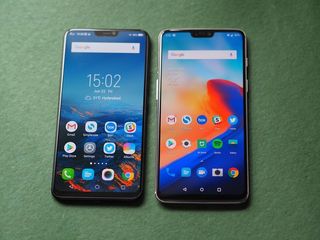
Vivo X21 Design and display
I switched to the Vivo X21 from the OnePlus 6, and in a lot of ways, both devices are very similar. Both feature glass backs, and the design aesthetic is near-identical, as are the dimensions — although the X21 isn't as wide. The X21 is thinner and lighter (due to a smaller battery), but the phone shares a lot of design traits with its sister brand.
There are a few differences, however — the Vivo X21 features the power and volume buttons on the right side, leaving the left side of the device bare. And there's no alert slider, as that's still a feature limited to OnePlus phones. The 3.5mm jack is now located at the top of the phone, and there's also an IR blaster. Oddly enough, the SIM card tray — which has slots for two SIM cards or a SIM card and a microSD card — is located at the bottom of the device, next to the MicroUSB charging port. Yes, Vivo is still using a MicroUSB port on a flagship.
The fit and finish at the back is also similar to that of the Mirror Black variant of the OnePlus 6, and while Vivo doesn't specify what version of Gorilla Glass is on the device, it's likely offering the same Gorilla Glass 5 protection as most other phones with glass backs.





Vivo is quoting a 90.3% screen-to-body ratio for the X21, and while it may not be as extreme as the Find X, it's better than most phones you can buy today.
Both the OnePlus 6 and the Vivo X21 have a similar-sized notch, and they also feature the same 6.28-inch 19:9 FHD+ Super AMOLED display. In fact, even the R15 Pro features an identical display size and notch, so it's safe to assume that all three BBK Electronics-owned brands are using the same Samsung panel.
That's a good thing, because the Super AMOLED display on the OnePlus 6 is one of the best in this category. The Vivo X21 also offers the same great color accuracy and deep contrast levels, but you miss out on the ability to tweak the color profile to your needs — DCI-P3 and sRGB modes are missing on this device. You do get a blue light filter and the ability to adjust color temperature to cooler or warmer hues.
If you've used a OnePlus 6, you'll be immediately familiar with the Vivo X21.
The X21 comes with a factory-installed screen protector, and while I usually recommend removing that as soon as you start using the device, things are a little different for this particular phone. As the X21 has an in-display fingerprint sensor (which is basically an optical scanner), Vivo warns against using third-party screen protectors as they may interfere with the performance of the fingerprint reader.
One of the main drawbacks on the design front is that the X21 comes with a MicroUSB port and not USB-C. That's particularly annoying when you consider that this phone retails for over $500, and there are budget phones that cost less than half as much that offer USB-C. Vivo is one of the few manufacturers that's yet to make the switch to USB-C, but in 2018 it's inexcusable for a company to not include the port on a $530 phone.
In-display fingerprint sensor
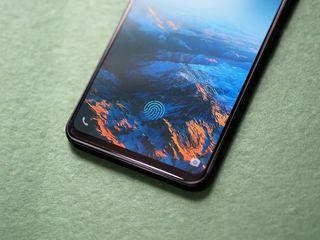
The in-display fingerprint reader is the marquee feature on the X21, and it works reliably enough that I haven't had any issues with it. It isn't quite as fast as the fingerprint sensor you have on your phone today, but it is a paradigm shift in biometrics and a preview of what's to come.
There's an activation zone in the lower third of the screen where you have to place your finger, and it takes just under a second to unlock the phone. You can customize the animation that activates whenever the sensor is authenticating your fingerprint, and until the NEX comes along with its retractable camera, this is the coolest way to unlock your phone.
In addition to the in-display fingerprint sensor, the X21 offers a face unlock feature as well. While it isn't quite as fast as the OnePlus 6, it's unerringly accurate and works well even in low-light scenarios.
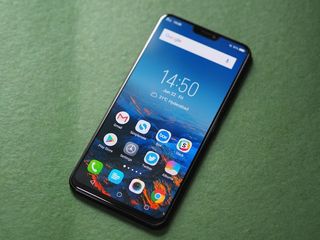
Vivo X21 Performance
| Specs | Vivo X21 |
|---|---|
| Screen | 6.28-inch FHD+ Super AMOLED |
| Chipset | Snapdragon 660 |
| RAM | 6GB |
| Storage | 128GB |
| Rear Camera 1 | 12MP, ƒ/1.8 |
| Rear Camera 2 | 5MP, ƒ/2.4 |
| Front Camera | 12MP, ƒ/2.0 |
| Battery | 3200mAh |
| Connectivity | Wi-Fi 802.11 ac, BT 5.0, FM radio |
| Security | In-display fingerprint |
| Colors | Black |
| Dimensions | 154.5 x 74.8 x 7.4 mm |
| Weight | 156.2grams |
| Price | ₹35,990 |
When it comes to the hardware side of things, there's plenty to like on the Vivo X21. It is powered by a Qualcomm's mid-range workhorse, the Snapdragon 660, and comes with 6GB of RAM and 128GB of internal storage as standard. I've used several phones powered by the Snapdragon 660 over the last 15 months — including the OPPO R11, Xiaomi Mi Note 3, and Nokia 7 Plus — and have come away impressed with just how good it is when it comes to day-to-day usage.
For 90% of everyday tasks, it holds its own next to the flagship-tier Snapdragon 845, and in general is one of the best mid-range chipsets I've seen in a long time. As you'd expect, the X21 powers through day-to-day tasks with nary an effort, and to its credit Vivo has done a great job optimizing Funtouch OS.
The X21 comes with a dedicated game mode that blocks incoming calls and notifications, allowing you to experience distraction-free gaming sessions. As stated earlier, Vivo built its brand around two pillars: audio and camera quality. As such, the X21 features an AK4376A DAC that leverages Vivo's Deepfield tech to offer a wider soundstage when listening to music. Vivo bundles a set of decent earbuds in the box, along with an 18W charger and a clear case.
You're not going to see any slowdowns on the X21.
Call quality on the X21 is decent, as is the built-in speaker. It's not going to be on the same level as phones with stereo speakers, but you won't notice any distortion at high volumes. I haven't faced any issues with Wi-Fi or cellular data connectivity as well.
The X21 comes with a 3200mAh battery that easily manages to deliver a day's worth of usage. I never had to worry about the phone running out of juice before the end of the day, and I averaged five hours of screen-on-time spread over the course of 20 hours. When you do need to top up, there's Quick Charge 3.0.
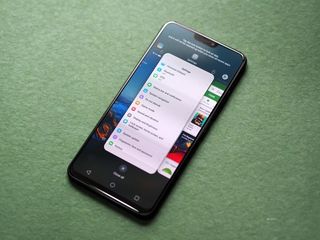
Vivo X21 Software
The Vivo X21 is the first Vivo device I've used for an extended period in the last two years. The only other Vivo product I tried out was the V3 Max, and at that time my take on the software was that it was a blatant iOS ripoff.
I figured things would've changed over the last two years as Vivo made its foray into more and more global markets, but that isn't the case. Funtouch OS 4.0 is still heavily inspired by iOS, and you even get a Control Center that pulls up from the bottom of the screen. You'll have to use the Control Center for accessing toggles for Wi-Fi, Bluetooth and brightness, and the notification pane itself is identical to what you'd find on iOS.
Even EMUI and MIUI offer quick relies and actionable notifications, and to use a skin that doesn't have those features — which have been present in Android for a few years now — feels prohibitive. Everything from the icons to the default backgrounds, animations, multitasking pane, and stock apps is "borrowed" from iOS, and while there's plenty of customization options on offer, the interface itself does little to distinguish itself in any meaningful way.
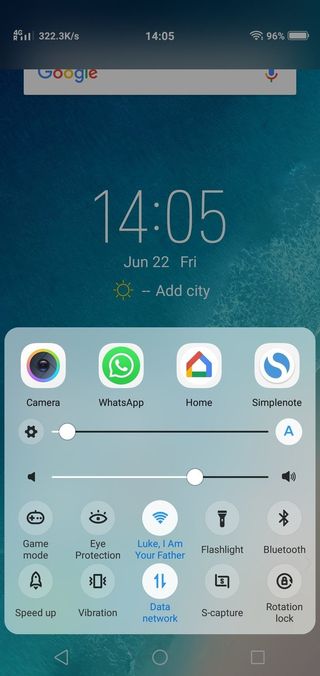
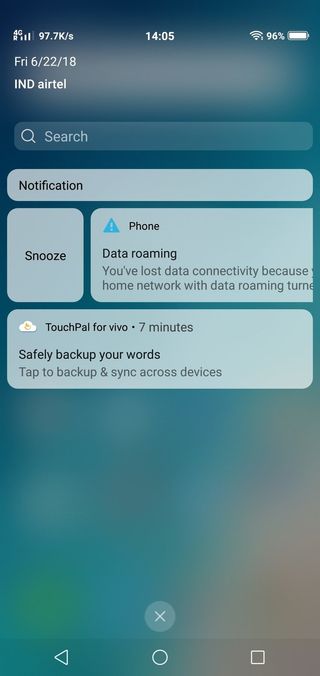
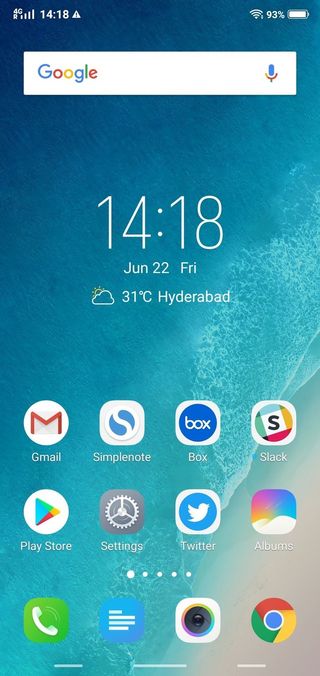

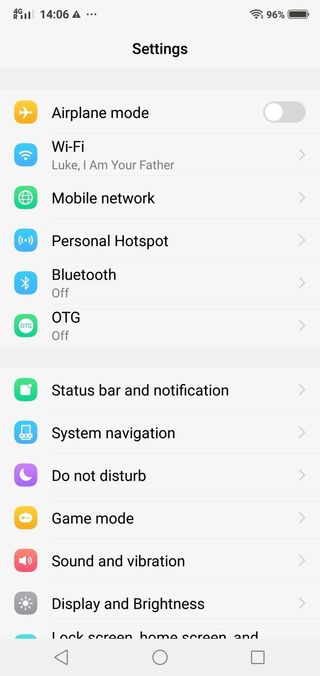




Like most other manufacturer skins, you'll be able to change the orientation of the back and overview buttons, and even select between Marshmallow-style navigation icons or the older Lollipop-era icons. You can also get rid of the nav bar entirely and switch to a gesture-driven interface.
Doing so will create three zones that you can interact with to control navigation: swipe up from the bottom of the screen to exit to the home screen, and swipe up and hold to access the overview menu. To go back in an app, you'll have to swipe up from the bottom left corner of the screen, and a swipe up from the bottom right launches the Control Center. There's no gesture to pull up the app drawer as Funtouch OS doesn't have a provision for one. Talking about missing features, there's no option to disable the notch either.
Funtouch OS is an iOS clone that has a ton of customizability.
Funtouch OS also comes with its share of bloatware. There's everything from UC Browser to Facebook, WhatsApp, NewsPoint, and WPS Office among others, and Vivo has its own app store dubbed V-Appstore that lets you manage these apps and download more. The custom app store feels like a vestige of the Chinese ROM that made its way into the global ROM, because Funtouch OS outside of China comes with Google services — Play Store, Chrome, Maps, YouTube, Drive, and others — installed out of the box.
The one saving grace for Funtouch OS is that the latest version is based on Android 8.1 Oreo. The systemwide autofill API is present, as is the ability to snooze notifications, and while notification dots aren't available, you do get Vivo's own take on the feature. The skin also offers gestures similar to what you'd find on Motorola devices — you can twist the phone to toggle the flashlight, and there's a feature similar to Moto Display that lets you view incoming notifications without switching on the screen.
One particularly nifty feature in Funtouch OS is the ability to get easy access to after-sales service. You can view your phone's warranty information from the settings, and also locate a service center that's closest to your location. There's also a manual tucked away in the settings that lets new users get acclimated with all the features on offer.
Vivo has maintained a lackadaisical attitude when it comes to updates, and there have been several devices from the manufacturer that haven't received a single platform update. Thankfully, that doesn't seem to be the case with the X21, as the device is one of seven third-party phones eligible for the Android P beta. The entry into the beta program suggests an Android P build will make its way to the device at some point.
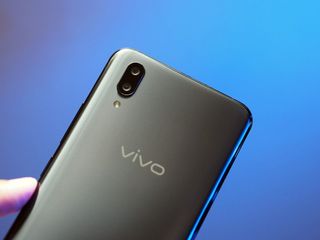
Vivo X21 Camera
Vivo's tagline is "Camera & Music", so it should be safe to assume that the brand cares about the cameras on its phones. The X21 offers dual 12MP + 5MP cameras at the back, and a 12MP shooter up front. There are a ton of shooting modes to choose from, and you get the usual portrait mode and panorama along with an option to use AR stickers. Unlike the Pixel 2, which lets you add elements like Stormtroopers and dinosaurs to a photo or video, AR stickers on the X21 let you add facial filters, much like what you'd find on Instagram.
There's also a manual mode that lets you adjust the white balance, autofocus, exposure, shutter speed, and ISO. Like most other Chinese brands, Vivo offers a beautify option called Face Beauty that automatically removes blemishes. You'll be able to adjust the intensity of the beautify mode, or use an AI option that tailors settings based on your facial features. There's even a document scanner mode that lets scans text and saves it in an easily-readable format.



The X21 takes excellent photos in daylight conditions, with images offering accurate colors and wide dynamic range. Portrait mode also works reliably enough most of the time, but there were a few instances where edge detection was way too aggressive. The X21 also holds its own in low-light scenarios.
The camera on the X21 is fast to focus and locks into subjects with ease, and the same is true when shooting 4K video. Handheld videos tend to be jittery as there's no stabilization, but aside from that the overall video quality was very decent. Vivo is known for its selfie cameras, and the 12MP front shooter is one of the best in this category.
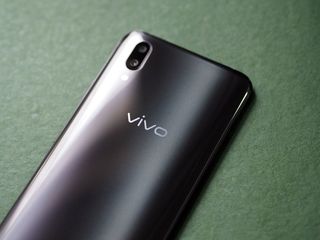
Should you buy it? Yes
The Vivo X21 has a lot to offer, and the in-display scanner makes it stand out in this segment. That said, the device loses out to the likes of the OP6 when it comes to value for money. The OP6 comes with beefier hardware, a USB-C port, and significantly better software.
But with the X21, you're getting a feature that isn't available on any other phone. And that more than makes up for the odd design choices, like the reliance on MicroUSB for a product in this category. With smartphones becoming increasingly commoditized, it's getting harder for brands to differentiate their products, and having an in-display fingerprint reader certainly pushes things in Vivo's favor.
Furthermore, Vivo's sales model doesn't rely on having an online presence. In fact, the main reason for the brand's meteoric rise is because of its strong offline network: Vivo has thousands of retail stores spread across India.
Vivo's strategy hinges on offline sales, and the X21 is the ideal device to cater to that market.
Vivo devices haven't been known to offer great value for money, as evidenced by the fact that the brand launched a device powered by the Snapdragon 450 for the equivalent of $300 earlier this year. Instead of playing the specs game, Vivo focuses on selling an experience — the focus is not on the hardware, but the day-to-day usage, and a few marquees features, like the front camera. Vivo was one of the first brands to roll out an LED light for the front camera, and it used that feature to sell millions of phones.
With the X21, that standout feature is the in-display scanner, which works perfectly into Vivo's sales strategy. After all, it's easy to wow customers walking into its retail stores with a demo of the feature, and while I don't like the current state of Funtouch OS, there's clearly a sizeable market that wants an iOS-lookalike at this price point.
Having used the X21, I'm beginning to understand how Vivo was able to rise through the ranks over the last two years. The phone is very well optimized, and Vivo nails the basics: I never noticed any slowdowns or lag, battery life is great, the camera is one of the better options in this category, and the display is fantastic.
4 out of 5
If you're in the market for a device with an in-display scanner, the X21 is still your best bet. The NEX has a faster scanner, but it's unlikely the phone will make its way outside of China. The X21 has its drawbacks — the lack of USB-C is particularly annoying — but as an overall package it has plenty to offer, if you don't mind the user interface.

Harish Jonnalagadda is a Senior Editor overseeing Asia at Android Central. He leads the site's coverage of Chinese phone brands, contributing to reviews, features, and buying guides. He also writes about storage servers, audio products, and the semiconductor industry. Contact him on Twitter at @chunkynerd.
